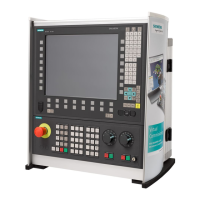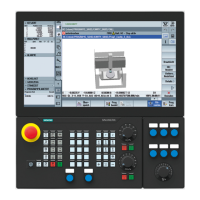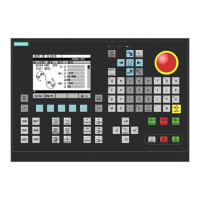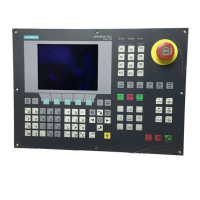Detailed Description
2.3 Continuous-path mode
Continuous-Path Mode, Exact Stop, LookAhead (B1)
2-6 Function Manual, 08/2005 Edition, 6FC5397-0BP10-0BA0
2.3 2.3 Continuous-path mode
2.3.1 General
Continuous-path mode
In continuous-path mode, the path velocity is not decelerated for the block change in order to
permit the fulfillment of an exact stop criterion.
The objective of this mode is to avoid rapid deceleration of the path axes at the block-change
point so that the axis velocity remains as constant as possible when the program moves to
the next block.
To achieve this objective, the "LookAhead" function is also activated when continuous-path
mode is selected.
Continuous-path mode causes the smoothing and tangential shaping of angular block
transitions by local changes in the programmed contour. The extent of the change relative to
the programmed contour can be limited by specifying the overload factor or rounding criteria.
Continuous-path operation causes:
• Contour rounding
• Shorter machining times through elimination of braking and acceleration processes that
are required to comply with the exact stop criterion
• Improved cutting conditions because of the more constant velocity
Continuous-path mode is suitable if:
• A contour must be traversed as quickly as possible (e.g., with rapid traverse).
• The exact contour may deviate from the programmed contour within a specific tolerance
for the purpose of obtaining a continuous contour.
Continuous-path mode is suitable if:
• A contour is to be traversed precisely
• An absolutely constant velocity is required
Implicit exact stop
In some cases, an exact stop needs to be generated in continuous-path mode to allow the
execution of subsequent actions. In such situations, the path velocity is reduced to zero.
• If auxiliary functions are output before the traverse motion, the previous block is only
terminated when the selected exact stop criterion is fulfilled.
• If auxiliary functions are to be output after the traverse motion, they are output after the
interpolator end of the block.
• If an executable block (e.g., starting a positioning axis) contains no travel information for
the path axes, the previous block is terminated on reaching the selected exact stop
criterion.
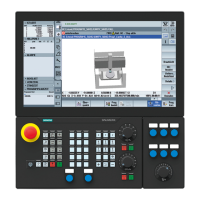
